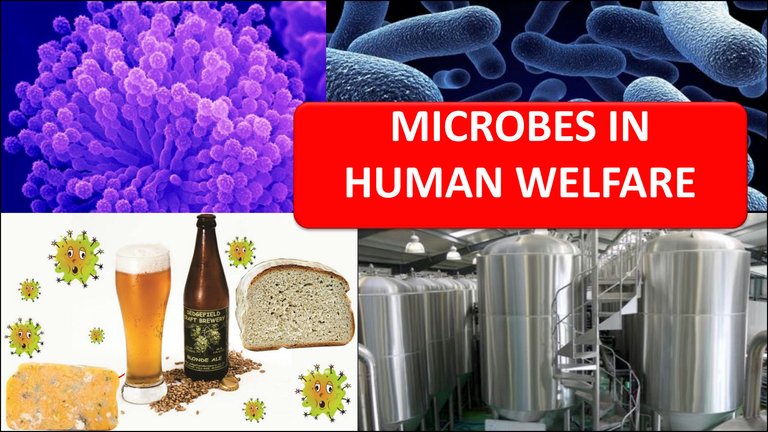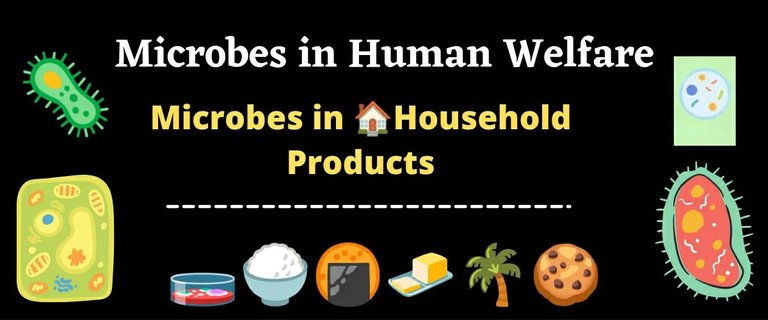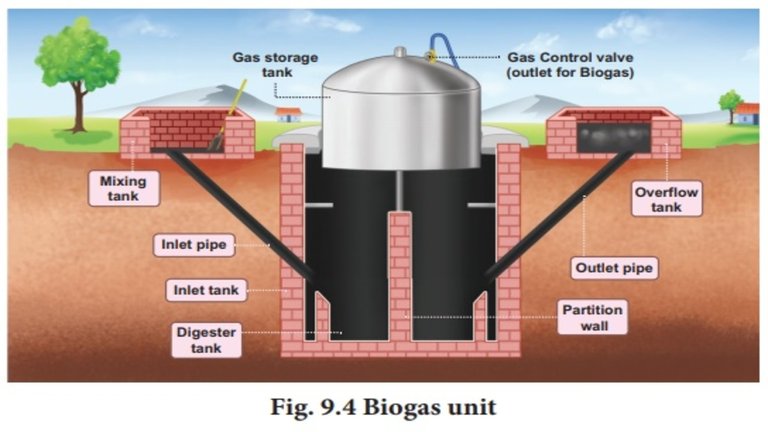Microbes are present everywhere- in soil, water, air, inside our bodies and that of other animals and plants. They are present even at sites where no other life-forms could possibly exists, such as deep inside the geysers where the temperature may be as high as 100°C or even under the layers of snow several metres thick and in highly acidic environments. Microbes are diverse-protozoa, bacteria, fungi and microscopic plant viruses, viroids and also prions that are proteinaceous infectious agents.
Microbes, often associated with diseases and infections, are paradoxically instrumental in various aspects of human welfare. From aiding digestion to producing antibiotics, microbes are indispensable contributors to human well-being.
Microbes in Household Products
One would be surprised to know that we use microbes or products derived from them everyday. A common example is the production of curd from milk. Microorganisms such as Lactobacillus and others commonly called lactic acid bacteria (LAB) grow in milk and convert it in to curd. During growth, the LAB produces acids that coagulate and partially digest milk proteins. The LAB plays very beneficial role in checking disease causing microbes in our stomach.
The dough, which is used for making flour based food items is also fermented by bacteria. The puffed up appearance of dough is due to the production of CO2 gas. The dough used for making bread is farmented using baker's yeast (Sacharomyces cerevisiae).
Cheese is one of the oldest food items in which microbes were used. The large holes in 'Swisscheese' are due to the production of a large number of CO2 by a bacterium named Propinibacterium sharmanii. The 'Roquefort cheese' are ripened by growing a specific fungi on them, which gives them a particular flavour.
Microbes in Medicines
Antibiotics produced by microbes are regarded as one of the most significant discoveries of the twentieth century and have greatly contributed towards the welfare of the human society. The field of medicine owes a considerable debt to microbes. Penicillin, the first widely used antibiotic, was discovered from the fungus Penicillium. Today, a plethora of antibiotics and vaccines are derived from or produced with the help of microorganisms, combating infectious diseases and saving countless lives.
The full potential of penicillin as an effective antibiotic was established by Ernest Chain and Howard Florey. This antibiotic was extensively used to treat American soldiers wounded in World War II.
Microbes in Sewage Treatment
We know that large quantities of waste water are generated everyday in cities and towns. A major component of this waste water is human excreta. This municipal waste water is also called sewage. It contains large amounts of organic matter and microbes. Many of which are pathogenic. This sewage cannot be discharged into natural water bodies like rivers and streams directly. Hence, sewage is treated in sewage treatment plants (STPs) to make it less polluting. Treatment of waste water is done by the heterotrophic microbes naturally present in the sewage.
Microbes in Production of Biogas
Biogas is a mixture of gases (containing predominantly methane) produced by the microbial activity and which may be used as fuel. Certain bacteria, which grow anaerobically on cellulosic material, produce large amount of methane along with CO2 and H2. These bacteria are collectively called methanogens, and one such common bacterium is Methanobacterium. These bacteria are commonly found in the anaerobic sludge during sewage treatment.
The biogas produced is used for cooking and lighting. The technology of biogas production was developed in India mainly due to the efforts of Indian Agricultural Research Institute (IARI) and Khadi and Village Industries Commission (KVIC).
Microbes as Biocontrol Agents
Biocontrol refers to the use of biological methods for controlling plant diseases and pests. In modern society, these problems have been tackled increasingly by the use of chemicals – by use of insecticides and pesticides. These chemicals are toxic and extremely harmful, to human beings and animals.
The very familiar beetle with red and black markings – the Ladybird, and Dragonflies are useful to get rid of aphids and mosquitoes, respectively. An example of microbial biocontrol agents that can be introduced in order to control butterfly caterpillars is the bacteria Bacillus thuringiensis (often written as Bt).
A biological control being developed for use in the treatment of plant disease is the fungus Trichoderma. Trichoderma species are free-living fungi that are very common in the root ecosystems. They are effective biocontrol agents of several plant pathogens.
In a nutshell
The microscopic world of microbes is far more than a realm of disease causing agents. Instead, it is a treasure trove of resources that contribute significantly to human welfare. From the intricacies of our digestive system to the production of life-saving medicines, microbes continue to shape our lives in ways we are only beginning to understand. Embracing the positive aspects of microbial activity is crucial for sustainable living and the well-being of both individuals and the planet.



Source of potential text plagiarism 1
Source of potential text plagiarism 2
Source of potential text plagiarism 3
Plagiarism is the copying & pasting of others' work without giving credit to the original author or artist. Plagiarized posts are considered fraud. Fraud is discouraged by the community.
Guide: Why and How People Abuse and Plagiarise
If you believe this comment is in error, please contact us in #appeals in Discord.